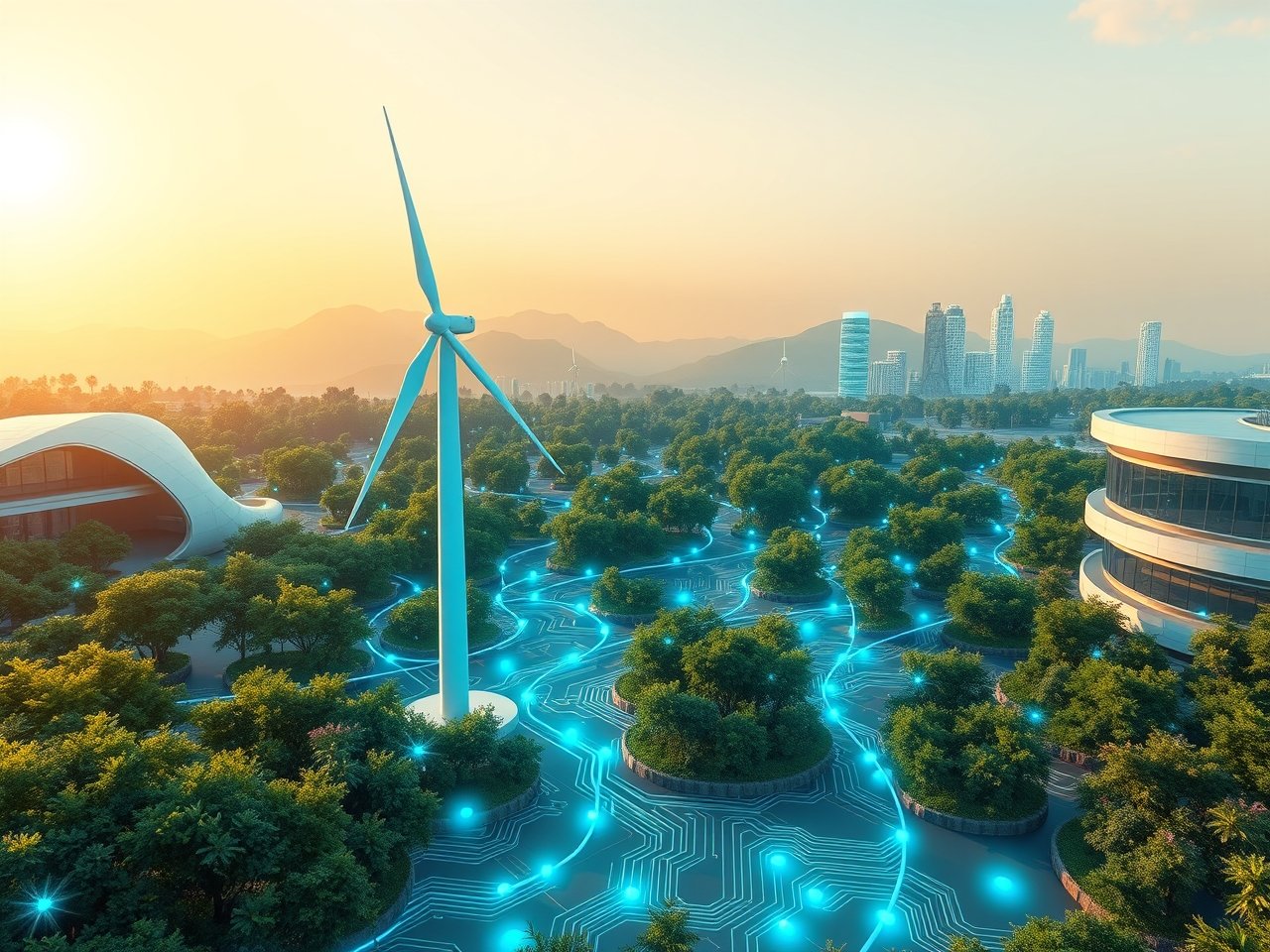As the arena seeks sustainable answers to fight weather change, AI is rising as a effective device to decorate performance, optimize resources, and drive innovation in renewable power. In this article, we discover the contemporary AI-driven improvements in clean electricity, their impact on the surroundings, and capacity future applications.
Transforming Renewable Energy Production
1. Optimizing Solar Energy Systems
AI is gambling a pivotal position in improving the performance of sun energy generation. Machine gaining knowledge of algorithms examine climate styles, expect daylight availability, and optimize the alignment of sun panels for optimum electricity output. For example, AI-powered structures can dynamically modify solar panel angles in actual-time, making sure consistent overall performance even under fluctuating climate situations.
2. Enhancing Wind Energy Efficiency
Wind turbines rely heavily on environmental factors which includes wind speed and route. AI models process great amounts of statistics to forecast wind patterns, enabling turbines to modify their positioning and maximize energy capture. Companies like Siemens Gamesa are leveraging AI to decorate turbine design and protection, lowering downtime and increasing operational performance.
3. Smart Grid Management
AI-pushed technology are revolutionizing grid control by allowing the mixing of renewable electricity resources. Smart grids geared up with AI can expect strength call for, manage deliver fluctuations, and make sure stability. This reduces reliance on fossil fuels and promotes a cleaner, more sustainable energy surroundings.
Impact at the Environment
The integration of AI in clean strength has full-size high-quality outcomes at the environment:
Reduced Carbon Emissions
By optimizing renewable electricity systems, AI facilitates reduce greenhouse fuel emissions. Efficient energy manufacturing and distribution decrease waste and reliance on non-renewable resources, accelerating the transition to a low-carbon economic system.
Conservation of Natural Resources
AI algorithms optimize strength garage and usage, ensuring that herbal resources are applied correctly. For instance, AI can decide when to shop extra electricity in batteries or feed it back into the grid, preventing resource overexploitation.
3. Real-Time Monitoring
AI-powered sensors and analytics enable actual-time monitoring of renewable power structures. This ensures early detection of inefficiencies or malfunctions, reducing strength loss and environmental impact.
Future Applications of AI in Clean Energy
As technology evolves, the intersection of AI and easy strength offers interesting possibilities:
- Advanced Energy Storage Solutions: AI is expected to revolutionize strength garage systems via optimizing battery performance and lifespan. Machine mastering models can predict usage patterns and regulate charging cycles, ensuring green power storage and lowering charges.
- AI-Driven Carbon Capture: Emerging AI technologies purpose to beautify carbon capture and storage (CCS) methods. By studying information from carbon capture facilities, AI can become aware of most effective techniques for taking pictures and storing CO2 emissions, mitigating their environmental effect.
- Decentralized Energy Systems: AI will play a important position in growing decentralized electricity structures, in which households and organizations generate their personal renewable energy. AI algorithms can control strength sharing and buying and selling inside local communities, fostering power independence and sustainability.
- Predictive Maintenance: AI-powered predictive renovation gear turns into widespread in renewable strength infrastructure. These gear can forecast gadget screw ups, time table proactive preservation, and increase the lifespan of renewable electricity belongings, lowering expenses and environmental footprint.
Challenges and Considerations
Despite its capability, the adoption of AI in easy power faces certain challenges:
- Data Privacy and Security: The reliance on massive facts for AI fashions increases worries approximately privacy and cybersecurity. Ensuring stable information handling and compliance with regulations is critical.
- High Initial Costs: Implementing AI technology in smooth strength structures requires enormous funding. Governments and personal entities should collaborate to fund studies and improvement to make these answers on hand.
- Ethical Considerations: AI algorithms should be designed to keep away from biases and prioritize equitable get entry to to smooth strength solutions. Developers should make certain transparency and accountability in AI-pushed strength systems.
AI-driven innovations in smooth energy are paving the manner for a sustainable future. From optimizing renewable electricity production to permitting advanced energy storage and decentralized structures, AI is at the forefront of the clean power revolution. As we preserve to discover the intersection of AI and renewable power, addressing demanding situations and fostering collaboration could be essential to realizing the whole ability of those technologies.







